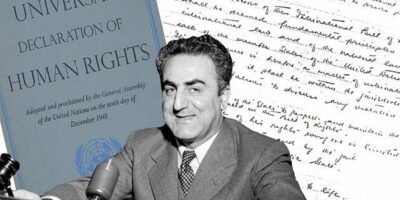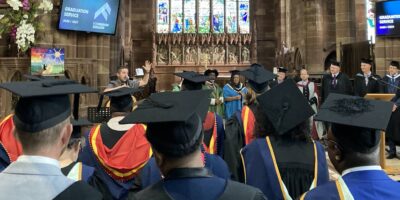He was a soldier whose name derived from the Roman god of war, Mars. Yet for over sixteen centuries, his name has stood for mercy and compassion.
Last night across Germany, Austria, Belgium and the Netherlands, processions of children carrying lanterns commemorated this man of compassion, singing songs and expecting rewards of sweets as they wound their way through inner city streets (including two of my grandchildren here in Amsterdam). For yesterday, 11 November, was Saint Martin’s Day. Variations of St Martin festivities took place in many other countries from Malta to Latvia.
The fourth-century saint has left an unparalleled legacy across Europe. Fourteen European cathedrals are named after him and no less than thirty-seven thousand churches worldwide. Nearly quarter of a million French people have his name as their surname. He also gave his name to 225 municipalities in France. And it is forever linked with the French city of Tours where he was made bishop by the people against his own will. He is considered the father of western monasticism, founding some of the first monasteries in the west.
Martin of Tours continues to inspire and influence contemporary Europeans to reflect and act on the teachings of Jesus to clothe the naked, feed the hungry, quench the thirsty, visit the prisoners, comfort the sick and shelter the homeless.
Born in Hungary around 316, soon after Emperor Constantine’s conversion, Martin wanted to serve God at the early age of ten years, we learn from his biographer Sulpitius Severus (c. 363–c. 425). But his father, a veteran officer, had no sympathies for his son’s spiritual aspirations. Martin was forced to join the army and take the military oath.
Naked beggar
Martin was a young 18-year-old soldier when posted in Amiens in Gaul, north of Paris, when he encountered a naked beggar at the city gates. Severus writes: What should he do? He had nothing except the cloak in which he was clad, for he had already (given away) the rest of his garments. Taking therefore his sword with which he was girt, he divided his cloak into two equal parts, and gave one part to the poor man, while he again clothed himself with the remainder. Upon this, some of the bystanders laughed, because he was now an unsightly object, and stood out as but partly undressed. However many who were of sounder understanding groaned deeply because they themselves had done nothing similar. They especially felt this, because, being possessed of more than Martin, they could have clothed the poor man without reducing themselves to nakedness.
Thanks to Severus’ account, this event would become legendary. Eventually, the half cloak he kept himself was preserved as a relic as ‘St Martin’s Cape’. The little shelter built to house the cape became known as a Capel or chapel. The priest who accompanied the cape carried into battle along with soldiers, as a relic to guarantee St Martin’s blessing on the outcome, was called capellan, or chaplain.
Yet Martin could not reconcile his faith with military service. On the eve of a battle near Worms in Germany, he told his commander: ‘I am the soldier of Christ, it is not lawful for me to fight.’ Accused of cowardice, Martin volunteered to stand unarmed on the frontline the next day: ‘In the name of the Lord Jesus, protected by the sign of the cross and not by shield or helmet, I will safely penetrate the ranks of the enemy.’
As dawn broke the next day, the enemy surrendered before fighting began and the vindicated Martin was discharged from service. Martin headed to Poitiers in Gaul to become a disciple of St. Hilary. In his mid-thirties, Martin gathered some monks around him to form a monastic community from which later developed the celebrated Benedictine Abbey of Ligugé, one of Europe’s oldest.
Raising the dead
Martin saw the monastic community as a spiritual parallel to the military outpost, a springboard for mission to the unreached of central and western Gaul. Many legends survive about the saint’s exploits. Severus tells of miracles of healing through Martin’s ministry, including the raising of three different individuals from the dead. One personally told the biographer how, after leaving his body, a heavenly tribunal told him that he would go back to earthly life due to Martin’s prayerful intervention.
Even as bishop of Tours, he lived in a cell outside the city, conducting his new duties with simplicity and evangelistic fervour. Soon other hermits joined him and another monastic community emerged, still operating today: Marmoutier.
Martin died in his eighties around 397 and became one the most revered saints in France’s history. Since the 1918 Armistice ending the Great War on his feast day of November 11, he has been regarded as the unofficial patron saint of that very secular nation.
Till next week,



